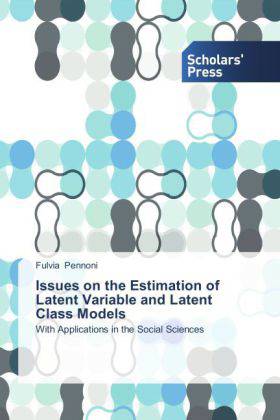
- Afhalen na 1 uur in een winkel met voorraad
- Gratis thuislevering in België vanaf € 30
- Ruim aanbod met 7 miljoen producten
- Afhalen na 1 uur in een winkel met voorraad
- Gratis thuislevering in België vanaf € 30
- Ruim aanbod met 7 miljoen producten
Zoeken
Issues on the Estimation of Latent Variable and Latent Class Models
Fulvia Pennoni
Paperback | Engels
€ 44,45
+ 88 punten
Omschrijving
This book is made of different research problems which have in common the presence of latent variables. In the first part undirected and directed graphical models are considered and in the case of Gaussian continuous variables the author shows that the specification of a complex multivariate distribution through univariate regressions induced by a Directed Acyclic Graph (DAG) can be regarded as a simplification. The Expectation-Maximization algorithm is considered for the maximum likelihood estimation of the model parameters and the author illustrates a method for obtaining an explicit formula of the observed information matrix by using the missing information principle. An essential background on the latent class model is given and its extension to study latent changes over time. The hidden Markov model is presented consisting of hidden states and observed variables both varying over time. The latent class cluster model is extended by proposing a latent model which also incorporates the longitudinal structure of the data by using a local likelihood approach. Some examples illustrate the use of the models in the social sciences. A detailed bibliograhy is provided.
Specificaties
Betrokkenen
- Auteur(s):
- Uitgeverij:
Inhoud
- Aantal bladzijden:
- 144
- Taal:
- Engels
Eigenschappen
- Productcode (EAN):
- 9783639716580
- Verschijningsdatum:
- 9/06/2014
- Uitvoering:
- Paperback
- Formaat:
- Trade paperback (VS)
- Afmetingen:
- 152 mm x 229 mm
- Gewicht:
- 222 g

Alleen bij Standaard Boekhandel
+ 88 punten op je klantenkaart van Standaard Boekhandel
Beoordelingen
We publiceren alleen reviews die voldoen aan de voorwaarden voor reviews. Bekijk onze voorwaarden voor reviews.











